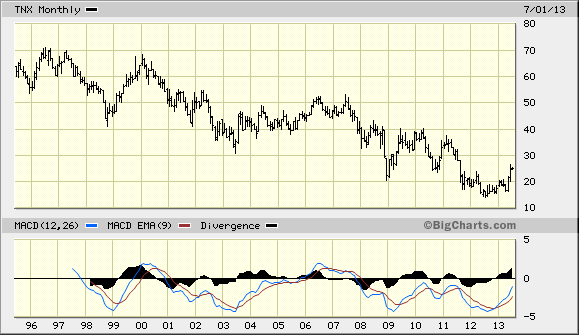By Joseph Ciolli and Lukanyo Mnyanda
The euro fell the most in two weeks against the yen as Portugal’s bonds slumped after two ministers resigned from the government, reigniting speculation Europe’s sovereign-debt crisis is worsening.
The Japanese currency climbed against all of its 16 most- traded peers as borrowing costs also increased in Spain and Italy and a drop in risk appetite boosted demand for the yen as a haven. The pound rose after U.K. services expanded. The dollar remained lower versus the yen after U.S. companies boosted employment more than forecast.
“Any time you have any sort of political uncertainty or anything that’s going to disrupt political stability, it’s going to be risk-off for the underlying currency,” said Eric Viloria, senior currency strategist at Gain Capital Group LLC in New York, in a phone interview. “That’s weighing on the euro.”
The 17-nation currency fell as much as 1.5% to 128.65 yen, the biggest intraday decline since June 14, before trading at 129.35 at 9:51 a.m. in New York, down 1%. The euro lost less than 0.1% to $1.2974 after sliding 0.4% earlier. The yen gained 0.9% to 99.70 per dollar.
The pound jumped the most in four weeks versus the dollar after a report showed U.K. services growth accelerated in June, adding to evidence the economic recovery is gaining strength.
Britain’s currency advanced against all of its major peers except the yen as reports this week showed manufacturing grew at the fastest in more than two years last month and construction expanded. Mark Carney began as governor of the Bank of England on July 1 and will announce his first policy decision tomorrow.
‘Positive Surprise’
“The numbers were a positive surprise, and the pound is showing some strength,” said Lutz Karpowitz, a senior currency strategist at Commerzbank AG in Frankfurt. “These are levels at which you don’t talk about a weak economy anymore.”
Sterling rose 0.7% to $1.5257 and gained 0.7% to 85.01 pence per euro.
Portugal’s 10-year bond yield jumped above 8% for the first time since November after Prime Minister Pedro Passos Coelho told voters in a televised speech from Lisbon yesterday he’s trying to hold his government together.
Portuguese Foreign Affairs Minister Paulo Portas, leader of junior coalition party CDS, quit yesterday in protest at the government’s budget policy. Portas was the second minister to resign this week after finance chief Vitor Gaspar stepped down, saying his credibility had been compromised by the government’s failure to meet budget targets set by the European Union.
‘Political Concerns’
“The euro is being driven by the headlines coming out of Portugal,” said Paul Robson, a senior currency strategist at Royal Bank of Scotland Group Plc in London. “In the past, markets have penalized currencies where you’ve got political concerns and a weak political backdrop. There’s been a lot of complacency about the euro-area periphery in general during the liquidity drench.”
The euro also weakened after a report showed services industries in the currency bloc shrank at a faster pace in June than initially estimated. An index based on a survey of purchasing managers was 48.3 last month, Markit Economics said. That’s less than an initial estimate of 48.6 on June 20 and below the level of 50 that divides expansion from contraction.
Europe’s common currency pared a loss against the dollar as initial claims for jobless benefits in the U.S. fell last week and the ADP Research Institute said American companies boosted employment by 188,000 workers in June, exceeding a Bloomberg survey’s forecast of a gain of 160,000.
A Labor Department report on July 5 may show U.S. nonfarm payrolls increased by 165,000 jobs, a Bloomberg survey forecast.
Fed Stimulus
The data are being reported as the Federal Reserve weighs whether labor-market progress is enough to reduce the $85 billion of bonds it buys each month to put downward pressure on borrowing costs and spur growth.
The premium for one-year options granting the right to sell the euro against the dollar relative to those allowing for purchases increased to 1.95 percentage points, the highest since Sept. 12, the 25-delta risk reversal shows.
The euro “remains under pressure,” having dropped back below its 200-day moving average, Karen Jones, a technical strategist at Commerzbank AG in London, wrote today in an e- mailed note to clients.
The shared currency may find support from $1.2931 to $1.2885, she said, referring to a level where buy orders may be clustered. The euro’s 200-day moving average was at $1.3075 today, according to data compiled by Bloomberg.
The euro has still gained 4.6% this year, according to Bloomberg Correlation-Weighted Indexes that track 10 developed-nation currencies. The dollar gained 6.7%, the best performer, and the yen tumbled 8.7%.
Aussie Drops
Australia’s dollar weakened against most major counterparts after central-bank Governor Glenn Stevens said the currency had been too high.
“If the economy needs a lower exchange rate, it will probably get it,” he said in a speech in Brisbane to the Economic Society of Australia.
The Aussie dollar fell 0.9% to 90.65 U.S. cents and reached 90.53 cents, the lowest since September 2010.
Trading in over-the-counter foreign-exchange options totaled $16 billion, compared with $37 billion yesterday, according to data reported by U.S. banks to the Depository Trust Clearing Corp. and tracked by Bloomberg. Volume in options on the dollar-Chinese yuan exchange rate amounted to $3.5 billion, the largest share of trades at 22%. Dollar-yen options totaled $3.2 billion, or 20%.
Dollar-yuan options trading was 5% above the average for the past five Wednesdays at a similar time in the day, according to Bloomberg analysis. Dollar-yen options trading was 4% below average.

















 Wolf Richter
Wolf Richter














 Interruptions to output are affecting physical supply of copper, according to Societe Generale SA.
Interruptions to output are affecting physical supply of copper, according to Societe Generale SA.